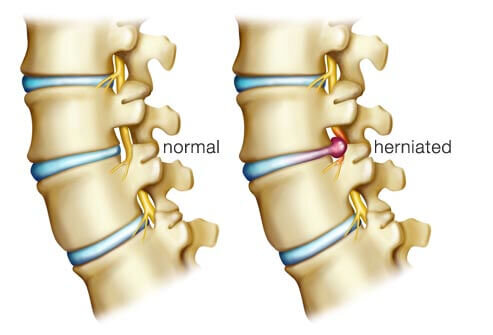Running is an excellent way to maintain physical fitness, but it can also stress the spine significantly. One of the common concerns for runners is the risk of developing a herniated disc. Understanding how to prevent this condition is crucial for ensuring long-term spinal health and mobility. This article will explore the best practices for spinal support, helping runners to avoid the debilitating effects of herniated discs.
Understanding Herniated Discs
Understanding disc issues, particularly herniated discs and bulging discs, is essential for runners aiming to maintain spinal health. A herniated disc occurs when the inner gel-like core of the disc protrudes through a tear in the outer layer, potentially pressing on nearby nerves. This can lead to pain, numbness, or weakness in the limbs. On the other hand, a bulging disc involves the disc extending beyond its normal boundary but does not rupture. While bulging discs may not always cause symptoms, they can lead to discomfort and increase the risk of a herniated disc.
Risk Factors for Runners
Runners are susceptible to herniated discs due to several risk factors. High-impact activities, particularly long-distance running, can place excessive strain on the spine. Additionally, factors such as poor core strength, muscle imbalances, and inadequate warm-up routines can increase the risk of disc injuries. Identifying and addressing these risk factors is crucial for prevention.
The Importance of Spinal Support
Spinal support is fundamental for runners, as it provides stability and alignment during physical activity. A well-supported spine helps to absorb impact and reduces the likelihood of injury. Proper posture during running is essential for distributing forces evenly throughout the spine, minimizing the stress placed on individual discs. By prioritizing spinal support, runners can enhance their performance while reducing the risk of herniated discs.
Best Practices for Preventing Herniated Discs
Implementing best practices for spinal health can help prevent herniated discs. Runners should focus on core strengthening exercises to build stability in the lumbar region. Engaging in activities that promote flexibility, such as yoga or Pilates, can also improve spinal alignment and reduce the risk of injury.
Additionally, runners should ensure proper hydration and nutrition to support muscle function and recovery. Understanding one’s limits and avoiding overtraining are also essential practices for maintaining spinal health.
Stretching and Strengthening Exercises
Incorporating stretching and strengthening exercises into a regular running routine is vital for spinal support. Targeted exercises that strengthen the core, hips, and back can provide the necessary support for the spine during running. Stretching helps to maintain flexibility, which is crucial for preventing muscle tightness that can lead to imbalances and injuries.
Examples of effective exercises include planks, bridges, and back extensions, which target the core and back muscles. Stretching the hip flexors, hamstrings, and lower back can also help maintain proper alignment and reduce the risk of herniated discs.
Proper Running Form and Technique
Adopting proper running form and technique is essential for preventing herniated discs. Runners should focus on maintaining a neutral spine while running, avoiding excessive forward lean or arching of the back. Striking the ground with the midfoot rather than the heel can also reduce the impact on the spine and improve overall biomechanics.
The Role of Footwear and Surface
The right footwear and running surface play significant roles in spinal support. Runners should choose shoes that offer adequate cushioning and support, helping to absorb shock and reduce impact on the spine. Running on softer surfaces, such as grass or trails, can also minimize stress on the spine compared to harder surfaces like concrete.
Conclusion
In conclusion, preventing herniated discs is essential for runners to maintain their health and continue enjoying their favorite activity. By understanding the nature of disc issues, recognizing risk factors, and implementing best practices for spinal support, runners can significantly reduce their chances of injury. Regularly consulting with a back pain doctor and adhering to proper stretching, strengthening, and running techniques will help ensure long-term spinal health and enhance overall performance on the track or trail. Prioritizing these practices will help prevent injuries and support a lifelong love for running.
If you’re seeking world-class care, New Jersey is home to numerous well-known spine specialists dedicated to helping patients regain their mobility and improve their quality of life. Whether through physical therapy, medication management, or minimally invasive procedures, these specialists can provide the comprehensive care you need to address your symptoms and prevent future issues.

Asad Arshad, a prolific author of over 50+ websites across various niches, is open to collaboration opportunities. 🌐 For guest posts, reach out to him to benefit from his vast expertise and connect with a diverse audience. 📬




